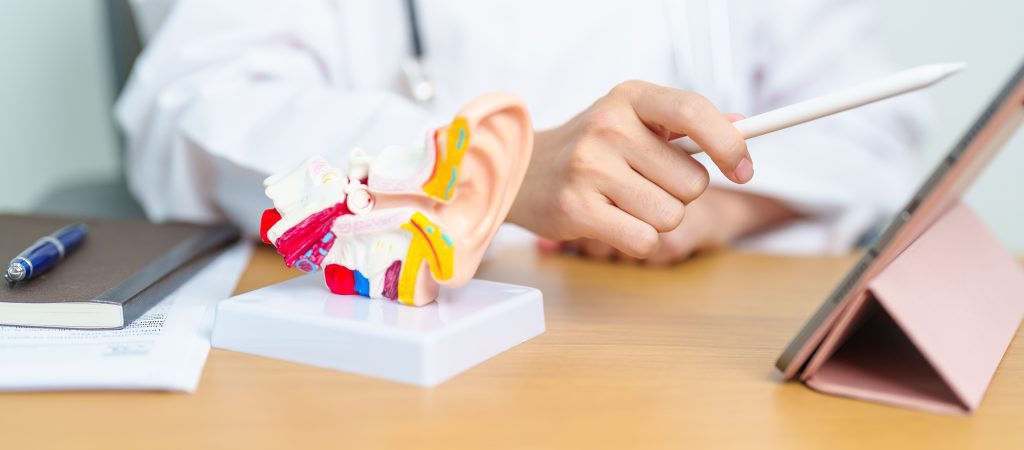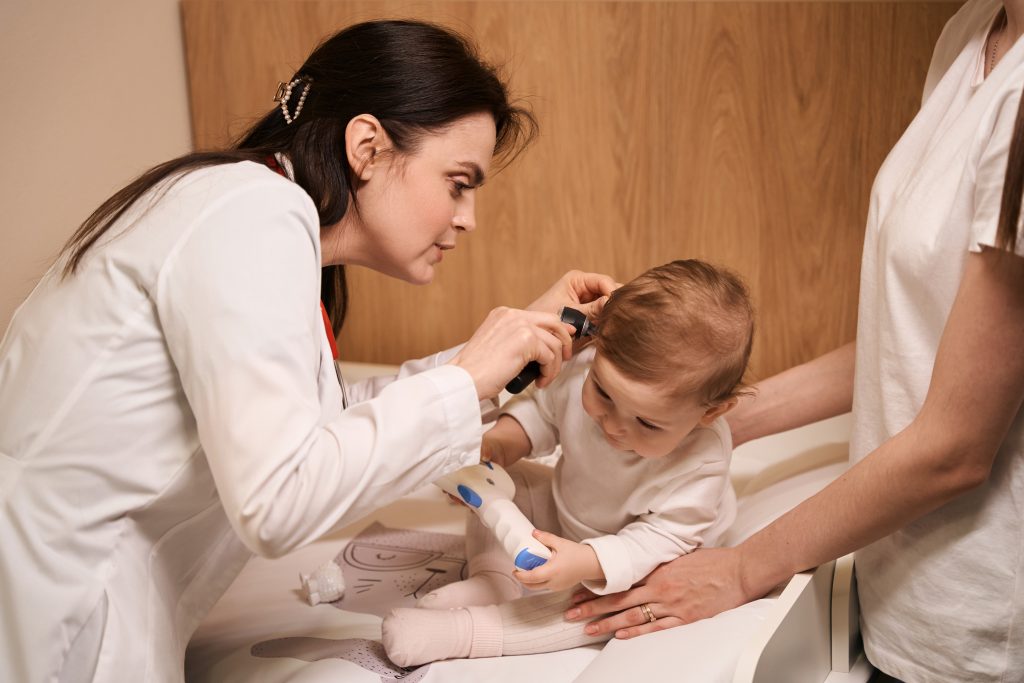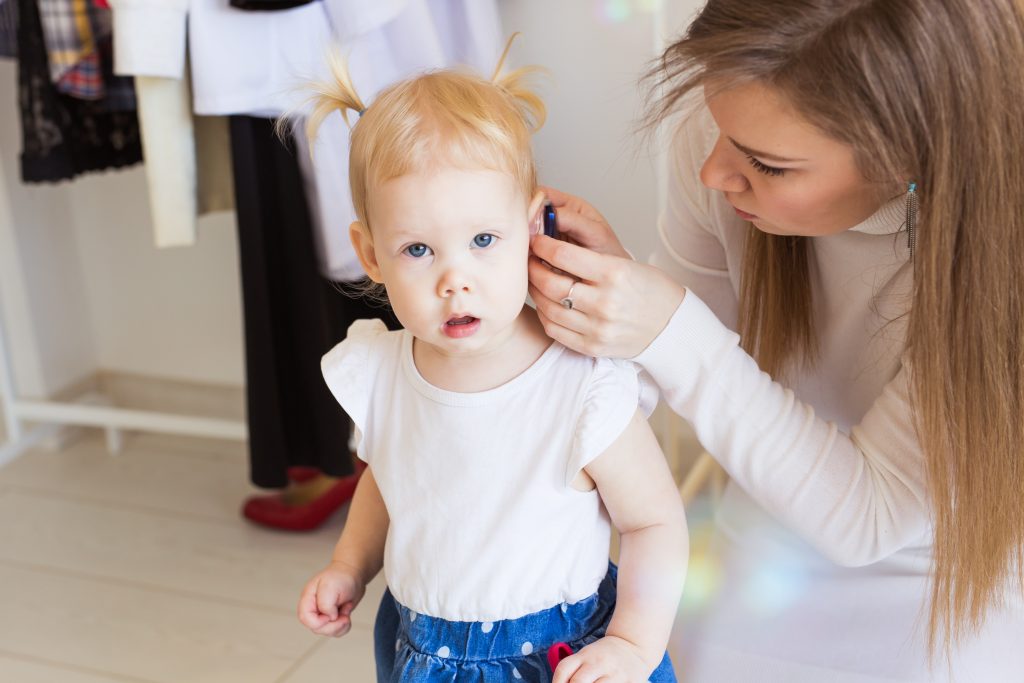Myringoplasty surgery
A myringoplasty is a medical procedure that aims to seal a perforation in the eardrum. In this surgery, a surgeon will use a graft to cover the hole and mend it. This operation is suitable for both children and adults, and the recovery period usually lasts for about one to two weeks.

What is a myringoplasty?
A myringoplasty is a surgical procedure performed to fix a perforated eardrum by closing the hole.
Typically, a puncture occurs when an infection in the middle ear ruptures the eardrum. It can also result from physical injury, such as a blow to the ear or inserting an object into it.
Frequently, a punctured eardrum does not result in any difficulties; however, it can result in recurring ear infections and diminished hearing capabilities.
Who needs myringoplasty?
In the majority of instances, a damaged eardrum will naturally heal within a few weeks without intervention. However, if you or your child experience specific conditions, your healthcare provider may suggest a procedure known as myringoplasty.
- Has a perforated eardrum that has not yet healed after a period of three months.
- Experiences persistent or repeated ear infections.
- Experiencing a decrease in hearing abilities caused by a punctured ear drum.
- Experiences an injury that leads to a torn eardrum.
What are the benefits of myringoplasty operation?

The benefits include:
- avoiding the entry of water into the middle ear, thus reducing the risk of developing an ear infection.
- fewer ear infections
- Hearing may potentially be enhanced, but fixing only the eardrum rarely results in significant improvement in hearing. If needed, a procedure can be performed on the ossicles (hearing bones) at a later time.
How should I prepare for myringoplasty?
Your healthcare provider will provide you with a comprehensive set of guidelines for preoperative preparation and specifically inform you about the necessary preparations for myringoplasty. In general:
- Ensure that you inform your surgeon of any medications or supplements you are presently consuming.
- Make arrangements with a friend or family member to transport you to and from the hospital on the day of your procedure.
- Schedule some time off from work or school in order to allow yourself to recuperate.
How is a myringoplasty done?

A myringoplasty is a surgical procedure that requires general anesthesia, so you will not be conscious during the operation. The surgeon will begin by selecting a thin and delicate piece of skin from another part of your body, typically around the ear area. After removing the chosen skin, the surgeon will close the incision with dissolvable stitches. The next step involves placing the removed skin underneath your eardrum to cover the perforation. The surgeon will use a temporary adhesive to secure the skin onto the surface of the eardrum until it attaches permanently.
After the skin graft procedure is finished, your ear will be filled with gauze to protect it from bacteria getting into the ear canal. Additionally, a bandage will be applied on your ear to further prevent infection and aid in the healing process.
What happens after myringoplasty?
Your nurse will regularly monitor your child’s heartbeat, temperature, and wound. Additionally, they will ensure that your child receives appropriate pain medication until they are ready to go home.
After your child wakes up from the anaesthetic, they can begin consuming liquids and, if they don’t feel nauseous, they can resume their regular diet. It generally takes at least 2 hours for your child to fully recover before they can leave. During this time, we perform checks to ensure their recovery is progressing smoothly.
Additionally, it provides us with an opportunity to ensure that your child is urinating after the surgery. In certain situations, your child may be granted permission to go home even if they have not urinated. However, if your child has not urinated within 6 hours of the operation, please reach out to the hospital ward for guidance. It is not suitable for your child to travel via public transportation after a general anesthetic.
It would be more comfortable and quicker for you to drive them home. Make sure to bring loose-fitting clothes for them. Sometimes, the anesthesia might make your child feel nauseous for the first day. The best thing to do is let them rest and give them small amounts of fluids, toast, or biscuits. If the sickness continues for more than a day, contact your GP. Some children may feel strange or disturbed after a hospital visit, so don’t worry if your child becomes more clingy, easily upset, or has trouble sleeping. Just be patient and understanding.
What are the risks or complications of myringoplasty?
Although complications from myringoplasty are uncommon, they have the potential to occur. These risks may include:
- Infection.
- Tinnitus (ringing in your ears).
- Dizziness.
- Hearing loss.
- Symptoms of graft failure in myringoplasty includes excessive bleeding, infection, and changes in taste perception.
- A hole in your eardrum that keeps coming back.
Treatment in Türkiye:
The medical staff of surgical teams, doctors, and consultants at REHABTÜRK can provide the best treatment options and free consultations, striving to stay up-to-date on the latest medical technologies and methods.
